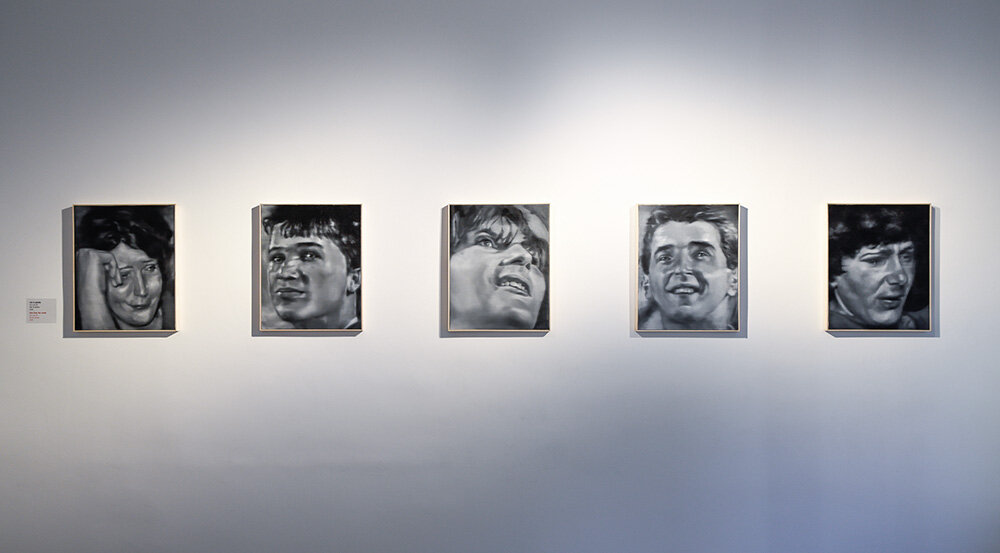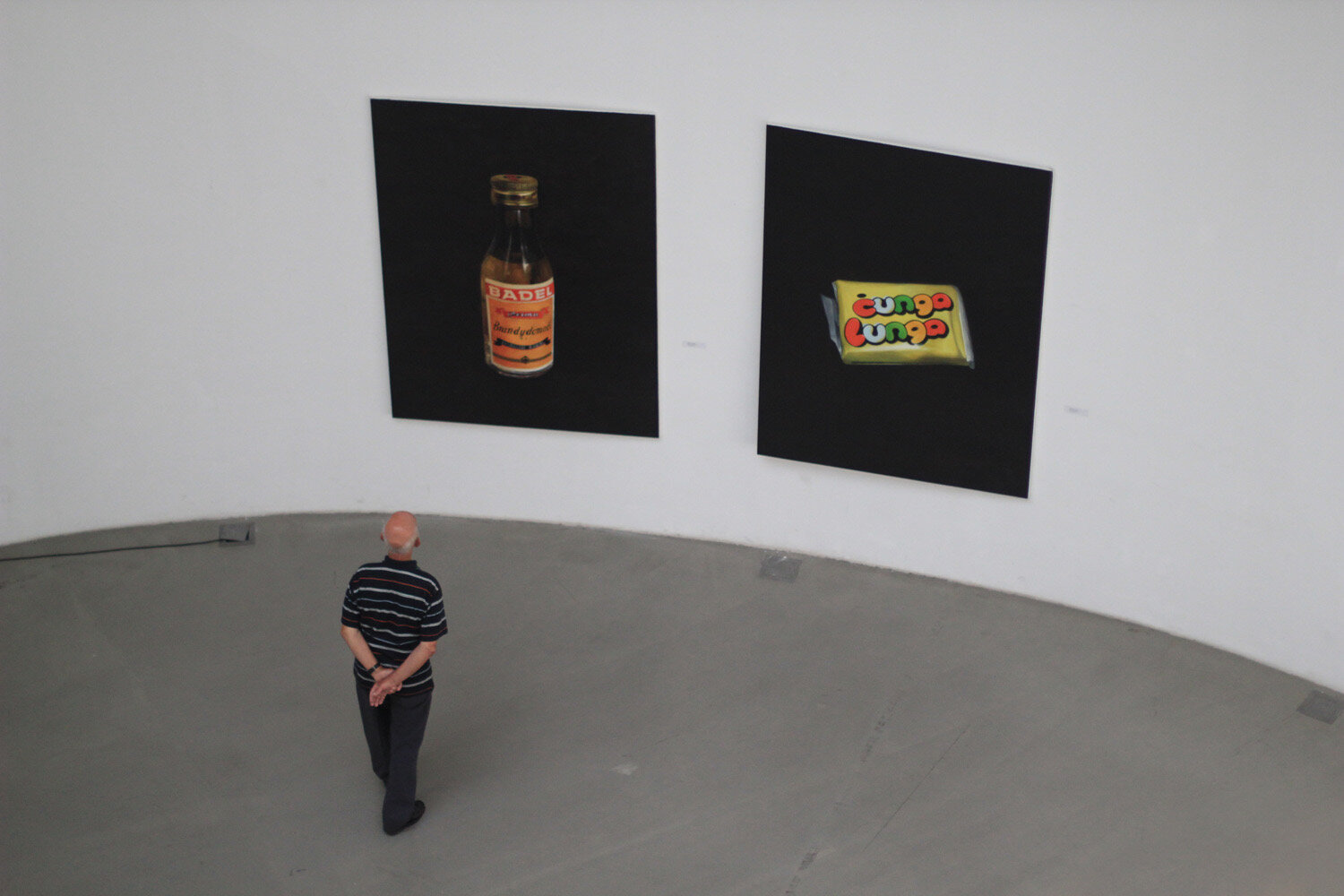Martina Grlić
Martina Grlic (1982) is an award winning artist based from Zagreb, Croatia. She graduated from the Academy of Fine Arts in Zagreb and is building a promising career in her country as well as abroad. Martina's art explores subjects such as nostalgia, memory, impermanence and even the politics of memory itself, all the while producing technically highly accomplished works. We talked to Martina about the Croatian art scene, her approach to painting and Yugoslavia, a country that no longer exists, but whose presence is both implicit and explicit in her works, as a part of both collective and individual memory.
How did you become interested in art and how did you transition from being interested in art to pursuing art as your career?
When I was much younger I revealed I have a certain skill so it became interesting to pursue that. Just like for example when you are interested in photography, and then you want to know how do the light and film work together and the mechanics behind it. But after first years at the Academy, it became obvious that I did not wish to create only beautiful paintings and that art is much more complicated than that, at least for me. Pursuing a career in art was never something I planned. It just happened. I was also lucky because soon after I graduated my work was recognized so I could build on that. I had this enthusiasm and a feeling of acceptance which encouraged me to start my own story.
Face from the crowd, 2018 exhibition
In our journal, we want to present female artists to the wider public, perhaps to people who don't visit galleries and don't understand art theory or criticism. How would you introduce your approach to painting to our readers? What inspires you to create and what is your process like?
I have a very systematic approach; my work is always a construct which is why I feel closer to the conceptual way of thinking. I always try to connect my art with the society and the world which surrounds me so most of my series are focused around personal as well as collective perspectives of nostalgia, memory, history and time.
I believe that art is, just as life, a changing process where exploration is very important, abandoning the old and building up for the new. That is also one of the reasons why my work is so versatile. I change a lot but at the same time, I try to preserve a recognizable direction.
Who are the artists that helped you define your aesthetic?
It is hard to single out a name or two. Most of the big names born in the 20th century, I guess. European artists like Luc Tuymans, Gerhard Richter, Elizabeth Peyton, Kristina Grosse or Barbara Kruger, also Chinese cynical realism and artists like Ai Weiwei and Sun Juan & Peng Yu.
Several of your works reference political and I would say still touchy subjects in former Yugoslavia. Your series of paintings Product, as well as Collective Dreams, deal with the subject matter by depicting old photographs or products made in Yugoslavia but stripped away from their original context. In some way, I see some of these paintings as similar to Americana painters like Ralph Goings. Cultural elements of ideology suspended in a timeless setting. They seem oddly intimate to me, sentimental even. What was your intention behind these works?
Of course, they are sentimental. I wanted to collect data from my surroundings, specific objects like toys, cans, comics, elements of popular culture. They evoke certain emotions, like joyful memories, in a nostalgic sense. Product series relates to a specific time and place and stands as a reminder of a political and social turmoil that happened in a very short period, a reminder of a deep ideological change. All these objects were produced in ex-Yugoslav factories. In that sense, there is some connection with Americana artists. Also, I was always in a way fascinated with rubber toys and old things which lost their original usefulness due to time effect.
Collective dreams is a darker series in which I was oriented towards human nature and the concept of ideology, how does it manifest itself through a collective. I was choosing scenes that are symbolic and when put together form this imaginative story of human nature.
Podravka factory
Series of paintings Factory depicts something that appears to be vintage scenes from a Yugoslav factory. Painted in black and white, they seem almost idyllic. Are these meant to be understood as a piece of post-socialist nostalgia, a rather acute criticism of contemporary capitalism or something entirely different?
For me, as someone who was a child during the eighties, I don't think this work was meant to be critical. I consider these paintings to be sort of a reminder or rather a creator for a certain emotional setting.
I do not believe that art can change society, at least not directly, but it can trigger certain emotions and evoke thinking. So that was my intention, to create a presence as an opposite to reality which was the absence of something which was not preserved.
Some people will look at this work just as beautiful idyllic pictures, and some people will find more layers. Reactions were something I was interested in.
You seem to have a very specific relationship to color. Many of your works are in black and white, and in some such, like Memory and Conflict, you introduce color to deface black and white images. Why black and white? And why the color?
I often use color or monochrome to define a context, where one can define a documentary element. Original photographs for paintings in the Factory series were taken from archival footage which is originally black and white, while in Product series I used my photographic scenes of colorful objects.
Sometimes color is an element through which I make a radical change on a chosen scene.
I would imagine that the power of those images would translate easily, although I wonder if anyone else would understand "čunga lunga" chewing gums!
Of course, people always communicate better with the content which they find familiar, but I think that the communication between viewer and artwork should not necessarily be the easy one. Sometimes the artwork seems simple and banal but underneath there is further information important for understanding. Some people sense those layers while others recognize only the aesthetic values.
Cunga Lunga, Badel Brandy
We recently interviewed the Serbian painter Simonida Rajčević and when asked about the position of women on the art scene in Serbia, her answer was - in a rough nutshell - that it's really difficult to talk about the position of women in something that doesn't exist; you can't be positioned (in either way) in something that isn't an organized system. What has your experience been like in the art world in Croatia?
I like to say that being an artist in Croatia is like working in a bubble. Of course, the art scene is versatile and has a lot to offer, that is the good thing. But, there is a big lack of private galleries and regulated markets, so most artists are on their own which is not typical. There are some good initiatives though and I do hope things will change in time. More and more people buy art and approach it with curiosity.
Most of the exhibitions and projects are executed through government institutions and there are some good options for artists, especially emerging ones but it is a small community.
As for the women artists, I don't like to talk in general, as things are always more complicated than they seem. For instance, when you look at the Academy only a few female artists are teaching there but on the other hand, at this point most of the students are female.
I believe that because it’s a patriarchal society it is more satisfying and generally more acceptable to see a male artist in a dominant position. I think of it as a bad behavioral habit that is practiced by both women and men.
_
You can find more work by Martina on www.martinagrlic.com and connect with her on instagram @martina_grlic








